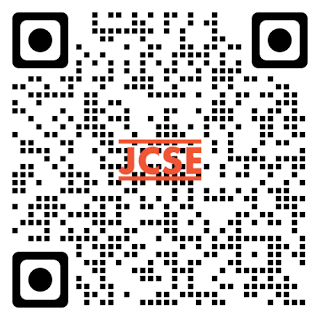Enhance Facial Biometric Template Security using Advance Encryption Standard with Least Significant Bit
(1) Al-Hikmah University
(2) Department of Computer Science, Federal University Wukari, Wukari-Nigeria
(3) EuroMed University of Fes
(4) Federal University Wukari
Abstract
Keywords
Full Text:
PDFReferences
M. A. Hambali and R. G. Jimoh, “Performance Evaluation of Principal Component Analysis and Independent Component Analysis Algorithms for Facial Recognition,” J. Adv. Sci. Res. Its Appl., vol. 2, pp. 47 – 62, 2015.
Y. K. Saheed, M. A. Hambali, I. A. Adeniji, and A. F. Kadri, “Fingerprint Based Approach for Examination Clearance in Higher Institutions,” vol. 2, no. 1, pp. 2–5, 2017. http://dx.doi.org/10.46792/fuoyejet.v2i1.46
S. Z. Li, Encyclopedia of Biometrics: I-Z., vol. 2. Springer Science & Business Media, 2009. https://doi.org/10.1007/978-0-387-73003-5
D. Sadhya and S. K. Singh, “Construction of a Bayesian decision theory-based secure multimodal fusion framework for soft biometric traits,” IET Biometrics, vol. 7, no. 3, pp. 251–259, 2018. http://dx.doi.org/10.1049/iet-bmt.2017.0049
A. M. P. Canuto, F. Pintro, and J. C. Xavier-Junior, “Investigating fusion approaches in multi-biometric cancellable recognition,” Expert Syst. Appl., vol. 40, no. 6, pp. 1971–1980, 2013. https://doi.org/10.1016/j.eswa.2012.10.002
O. C. Abikoye, U. A. Ojo, J. B. Awotunde, and R. O. Ogundokun, “A safe and secured iris template using steganography and cryptography,” Multimed. Tools Apllication, 2020, doi: /doi.org/10.1007/s11042-020-08971-x A.
E. J. C. Kelkboom, X. Zhou, J. Breebaart, R. N. J. Veldhuis, and C. Busch, “Multi-algorithm fusion with template protection,” in 2009 IEEE 3rd international conference on biometrics: Theory, applications, and systems, 2009, pp. 1–8. https://doi.org/10.1109/BTAS.2009.5339045
K. Nandakumar and A. K. Jain, “Biometric template protection: Bridging the performance gap between theory and practice,” IEEE Signal Process. Mag., vol. 32, no. 5, pp. 88–100, 2015. https://doi.org/10.1109/MSP.2015.2427849
R. Dwivedi and S. Dey, “A novel hybrid score level and decision level fusion scheme for cancelable multi-biometric verification,” Appl. Intell., vol. 49, no. 3, pp. 1016–1035, 2019. https://doi.org/10.1007/s10489-018-1311-2
M. A. Hambali, M. D. Gbolagade, and Y. A. Olasupo, “Cloud Security Using Least Significant Bit Steganography and Data Encryption Standard Algorithm,” GESJ Comput. Sci. Telecommun., vol. 1, no. 58, pp. 17–29, 2020.
A. Cheddad, J. Condell, K. Curran, and P. Mc Kevitt, “Digital image steganography: Survey and analysis of current methods,” Signal Processing, vol. 90, no. 3, pp. 727–752, 2010. https://doi.org/10.1016/j.sigpro.2009.08.010
Y. Yiğit and M. Karabatak, “A stenography application for hiding student information into an image,” in 2019 7th International Symposium on Digital Forensics and Security (ISDFS), 2019, pp. 1–4. https://doi.org/10.1109/ISDFS.2019.8757516
M. S. Taha, M. S. M. Rahim, S. A. Lafta, M. M. Hashim, and H. M. Alzuabidi, “Combination of steganography and cryptography: A short survey,” in IOP conference series: materials science and engineering, 2019, p. 052003. https://doi.org/10.1088/1757-899X/518/5/052003
I. McAteer, A. Ibrahim, G. Zheng, W. Yang, and C. Valli, “Integration of biometrics and steganography: A comprehensive review,” Technologies, vol. 7, no. 2, p. 34, 2019. http://dx.doi.org/10.3390/technologies7020034
R. M. Bolle, J. H. Connell, and N. K. Ratha, “Biometric perils and patches,” Pattern Recognit., vol. 35, no. 12, pp. 2727–2738, 2002. https://doi.org/10.1016/S0031-3203(01)00247-3
Y. Dodis, R. Ostrovsky, L. Reyzin, and A. Smith, “Fuzzy extractors: How to generate strong keys from biometrics and other noisy data,” SIAM J. Comput., vol. 38, no. 1, pp. 97–139, 2008. https://doi.org/10.1007/978-3-540-24676-3_31
M. Umamaheswari, S. Sivasubramanian, and S. Pandiarajan, “Analysis of different steganographic algorithms for secured data hiding,” IJCSNS Int. J. Comput. Sci. Netw. Secur., vol. 10, no. 8, pp. 154–160, 2010. http://paper.ijcsns.org/07_book/201008/20100825.pdf
P. Marwaha and P. Marwaha, “Visual cryptographic steganography in images,” in 2010 Second international conference on computing, communication and networking technologies, 2010, pp. 1–6. https://doi.org/10.1109/ICCCNT.2010.5591730
Z. Zainal-Abidin, M. Manaf, and A. S. Shibghatullah, “A New Model of Securing Iris Authentication Using Steganography,” in International Conference on Software Engineering and Computer Systems, 2011, pp. 547–554. http://dx.doi.org/10.1007/978-3-642-22170-5_47
S. Usha, G. A. S. Kumar, and K. Boopathybagan, “A secure triple level encryption method using cryptography and steganography,” in Proceedings of 2011 International Conference on Computer Science and Network Technology, 2011, vol. 2, pp. 1017–1020. https://doi.org/10.1109/ICCSNT.2011.6182134
P. Bharti and R. Soni, “A new approach of data hiding in images using cryptography and steganography,” Int. J. Comput. Appl., vol. 58, no. 18, 2012. https://research.ijcaonline.org/volume58/number18/pxc3883716.pdf
P. Thiyagarajan, V. Natarajan, G. Aghila, V. Prasanna Venkatesan, and R. Anitha, “Pattern based 3d image steganography,” 3D Res., vol. 4, no. 1, pp. 1–8, 2013. https://doi.org/10.1007/3DRes.01(2013)1
S. Chaudhary and R. Nath, “A new template protection approach for Iris recognition,” in 2015 4th International Conference on Reliability, Infocom Technologies and Optimization (ICRITO)(Trends and Future Directions), 2015, pp. 1–6. https://doi.org/10.1109/ICRITO.2015.7359306
S. Pramothini, Y. S. Pavan, and N. Harini, “Securing images with fingerprint data using steganography and blockchain,” Int. J. Recent Technol. Eng., vol. 7, no. 4, pp. 82–85, 2018. https://www.ijrte.org/wp-content/uploads/papers/v7i4s2/Es2042017519.pdf
K. Y. Saheed, A. S. Olaniyi, A. M. Olaolu, and A. N. Babatunde, “Development of Iris biometric template security using steganography,” Comput. Inf. Syst., vol. 22, no. 3, pp. 8–18, 2018. link.gale.com/apps/doc/A562690777/AONE?u=googlescholar&sid=googleScholar&xid=0a7f27f6
Refbacks
- There are currently no refbacks.
Indexs by:

 Journal of Computer Science and Engineering (JCSE)
Journal of Computer Science and Engineering (JCSE)Published by : ICSE (Institute of Computer Sciences and Engineering)
Website : http://icsejournal.com/index.php/JCSE/
Email: jcse@icsejournal.com
 is licensed under a Creative Commons Attribution-ShareAlike 4.0 International License.
is licensed under a Creative Commons Attribution-ShareAlike 4.0 International License.







